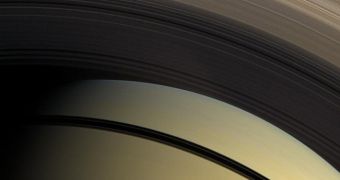Since 1610, when Galileo first spotted the rings around Saturn using a primitive telescope, astronomers have been fascinated with these remarkable features of the gas giant. In the ensuing 400 years, much data has been collected about a wide array of traits governing them, and significant progress has been made. With the addition of the Cassini spacecraft in the planet's orbit, even more data were collected. However, two of the most important questions about the rings have yet to be answered, Space reports.
What researchers are really interested in knowing is how much the rings weigh, and how old they really are. Thus far, data pertaining to these queries has only been determined hypothetically. Some of the other crucial features about the rings, such as what they are made of, and what forces act on them, influencing their behavior, have already been identified. Still, these two important questions have been left unanswered, Space indicates. Now, new investigations from the Cassini spacecraft are about to cast some light on these mysteries, experts announce.
In charge of the new studies will be interdisciplinary scientist for rings and dust Jeff Cuzzi, who handles this portion of Cassini's mission. The expert, who holds an appointment at the Moffett Field, California-based NASA Ames Research Center, says that the rings around Saturn could not possibly have developed when the solar system first formed, some 4.6 billion years ago, as originally thought. Cuzzi adds that new data would seem to indicate the rings are only one tenth of the age of the solar system, which means they are only hundreds of millions of years old.
The Voyager spacecraft showed for the first time that the rings might not be as old as the Sun, highlighting the fact that processes going on inside them were evolving very fast. But Cassini demonstrated that this speed was in fact even faster. It's now the probe's job to take advantage of the upcoming alignments of the Saturnine system to ensure it collects sufficient data to allow investigators to create a clearer picture of what is going on inside the rings.

 14 DAY TRIAL //
14 DAY TRIAL //